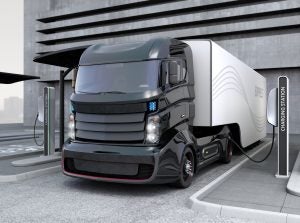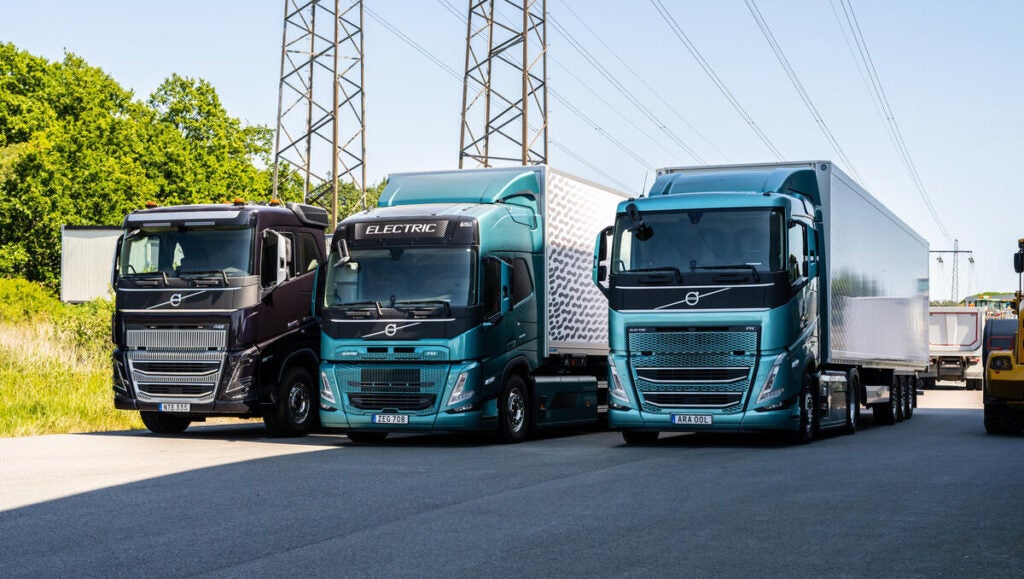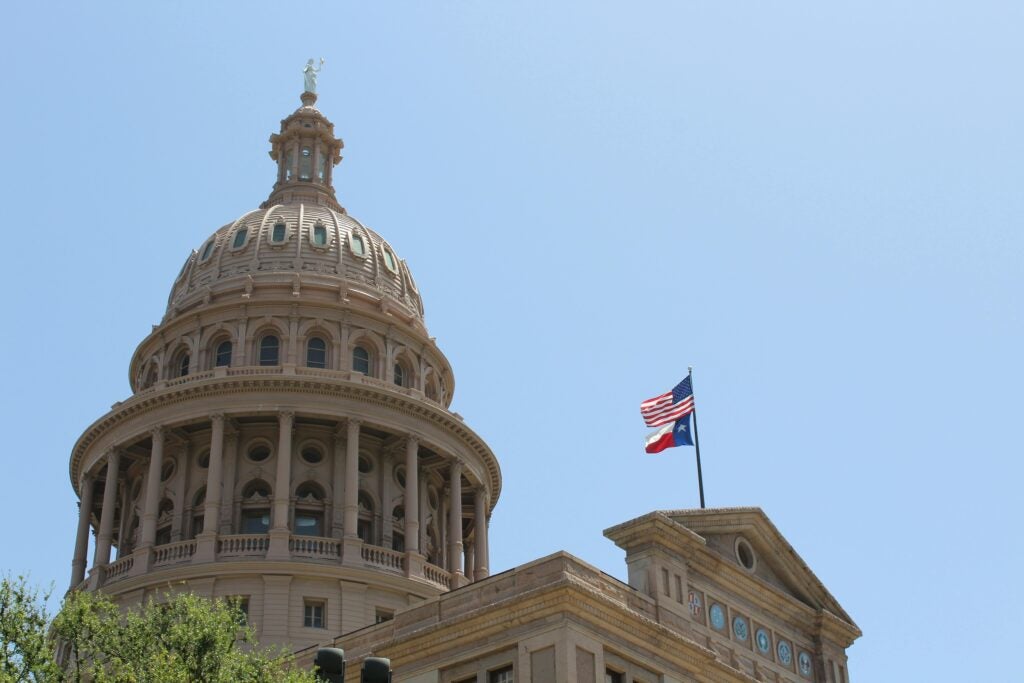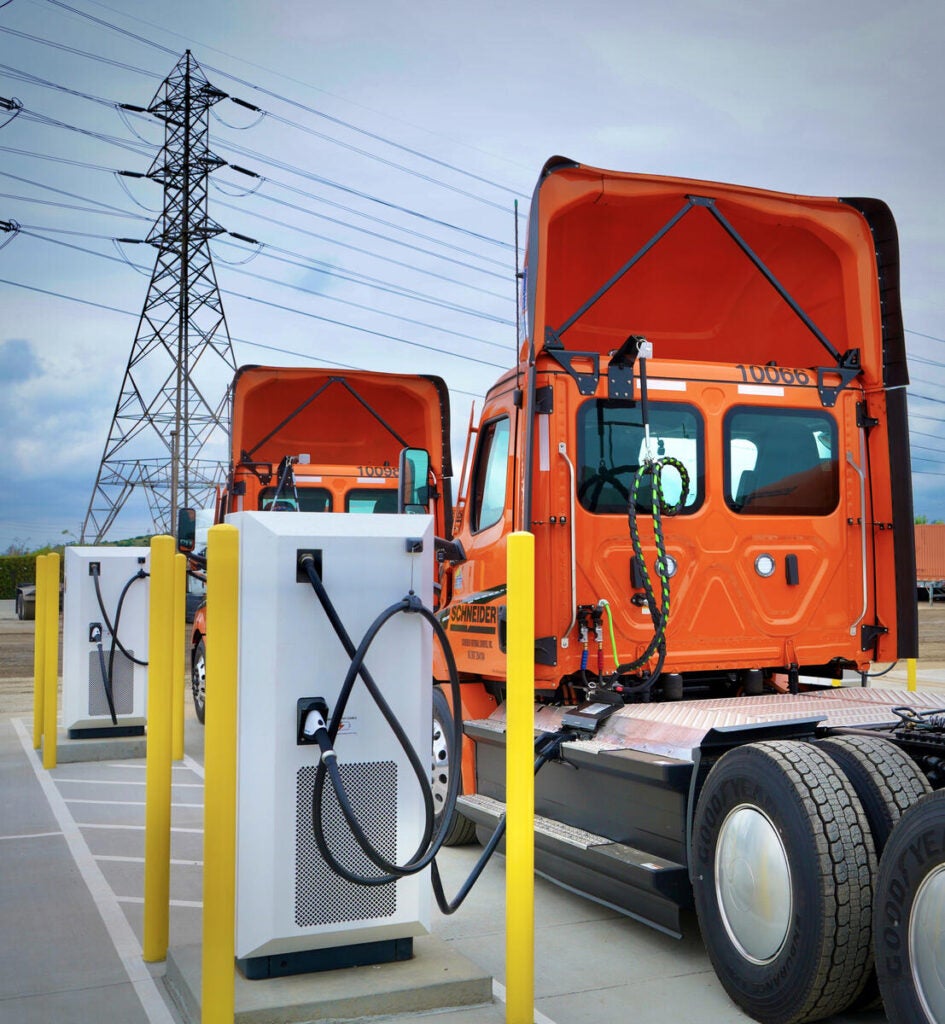- The Texas Legislature closed their latest session demonstrating bipartisan support for several priority zero-emission truck policies.
- Though deadlines and politics in the compact legislative series prevented final passage of the measures, there is now a strong foundation for future policy opportunities to complement the growing zero-emission transportation market in Texas.
Energy Exchange
Bipartisan support, market signals show path forward for zero-emission trucks in Texas
Texas policy proposals could create a new template for state actions on zero-emission trucks
Update: Texas lawmakers have filed three bills to advance the key policies we laid out earlier in session. HB 1846 creates an electric truck advisory council, HB 4519 would consolidate state TERP grants for clean trucks, and HB 4841 creates a third-party scrappage program to help find pre-2009 vehicles companies can secure to apply for grants. For more on each of the bills, read their one-pagers here:
• HB 1846 – Electric Truck Advisory Council
• HB 4519 – TERP Consolidation
• HB 4841 – Third Party Scrappage Program
In the last two years, Texas has made over $100 million available in incentives for zero-emission trucks and buses. With incentive programs at the federal level uncertain, Texas has quietly but confidently become a leader in the clean truck industry. Texas’ light-touch approach to regulation allows it to move at the industry’s pace, focusing on incentives and policies that support Texas businesses and drive forward new ideas that bolster the state’s diverse economy.
EPA announces recipients of monumental funding to clean up America’s ports
America’s ports are hotbeds for toxic air pollution due to the diesel-powered ships and port vehicles that move our goods from sea to land. This pollution causes all kinds of health problems for nearby communities — from asthma and lung disease, to premature birth and death — which is why today’s announcement from the Environmental Protection Agency is so important.
Texas releases heavy-duty charging taskforce report
This week the Texas Department of Transportation released the final report from a statewide interagency taskforce focused on how to support charging infrastructure for medium- and heavy-duty vehicles. The 51-page report provides an overview of federal and state policies, while making state-specific recommendations for how Texas legislators can utilize some of the state’s competitive advantages to best support growth in that market — including cheaper electricity, a light regulatory climate and a competitive state grant program.
New EDF report details how Texas’ clean air program can more effectively speed the transition to ZEV trucks
A new report released today by EDF details how Texas’ $342 million clean air program can be improved to help companies that want to secure state funding for zero-emission trucks. Recommendations include how to improve program design of the grants offered, including how to modernize the calculation of nitrogen oxides reductions to ensure the full benefit of switching from diesel to zero-emission vehicles is captured, and how to improve the administrative management of the program so it is easier for companies to secure funds to deploy zero-emission vehicles in Texas.
Texas creates task force to evaluate charging needs for ZEV trucks
 Texas will create an interagency task force to evaluate infrastructure charging and capacity needs for medium- and heavy-duty vehicles, a tremendous step forward in the state’s ongoing efforts to support the zero-emission vehicle industry.
Texas will create an interagency task force to evaluate infrastructure charging and capacity needs for medium- and heavy-duty vehicles, a tremendous step forward in the state’s ongoing efforts to support the zero-emission vehicle industry.
The taskforce is the result of a rider adopted in the state budget, which was signed into law earlier this month. The rider requires the Texas Department of Transportation to coordinate with the Texas Commission on Environmental Quality, the Public Utility Commission and the Electric Reliability Council of Texas to “evaluate how to deploy zero-emission medium-duty and heavy-duty vehicle charging infrastructure to best support growth in that market” in a way that will “maximize competitiveness, innovation, and efficiency, while also maintaining the integrity and cost-effectiveness of the Texas grid.”














